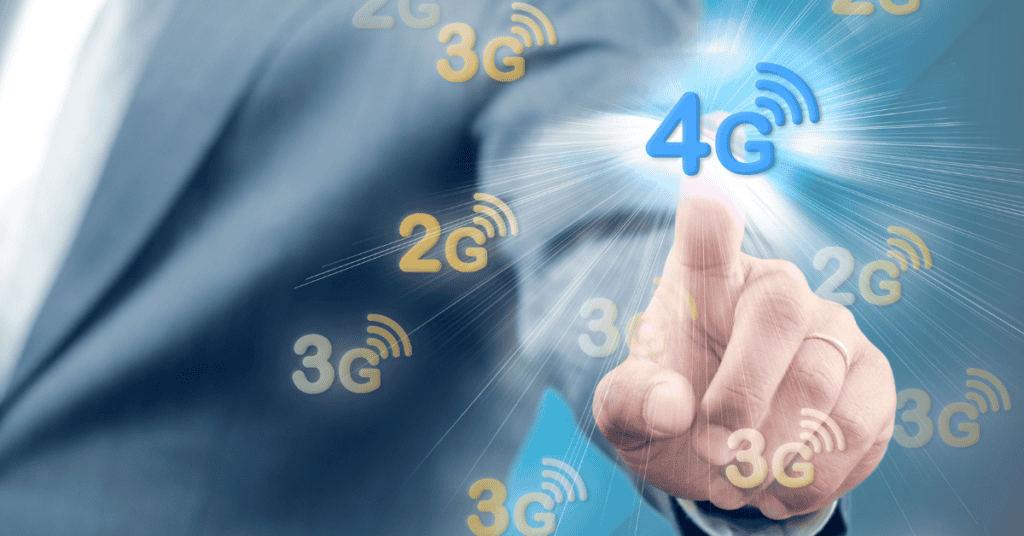Have you ever wondered what the difference between the Global and LTE settings on your phone is?
Well, you’re definitely not alone.
Many people are often left baffled by the two and wonder, “Should my phone be on Global or LTE?”.
The answer really depends on which one gives you the best signal!
The Global setting is designed to allow your phone to search for the best possible signal when traveling outside the country.
However, if you leave your phone on Global even when you’re within your home territory, it should automatically auto-detect which connection is best for your current location.
This article will give you comprehensive details of how it all works- so keep reading!
What Is The Difference Between Global And LTE Networks?

Before you can understand how Global mode works, a few terms need explaining.
You may have seen the abbreviations GSM, CDMA, and LTE on your phone network settings before, but do you know what they mean?
All three of them are different cellular technologies.
A GSM network refers to the Global System for Mobile Communications.
It is a second-generation (or 2G) technology that enables mobile data usage. Moreover, it is the oldest and most common technology for digital and wireless phones.
CDMA refers to Code Division Multiple Access, which uses both 2G and 3G technology.
It is similar to GSM but does not allow you to transfer data and make calls simultaneously as GSM does.
As a result, CDMA was the less popular choice in many countries around the world. Nowadays, the introduction of Long Term Evolution or LTE has all but taken over.
GSM and CDMA represent 2G and 3G technology, while LTE is 4G technology.
LTE also does not allow users to make calls and transfer data simultaneously. As a result, phones typically use LTE for data while still utilizing GSM or CDMA for calls and texts.
It is why you often see a combination of options in regards to network types on your phone.
What Does “Global” Mode Mean On Your Phone?

Having your phone in Global mode means it will search for the best signal strength while traveling out of the country.
A global mode in combination with GSM support enables your phone to find the fastest data connection available in your current location.
It is able to do this since GSM is in use in most countries worldwide.
Due to the way Global mode works, it tends to use up more battery power when switched on.
This is due to the fact that a phone on Global mode is constantly on the lookout for the best signal.
Most phones will come with Global mode already activated by default.
This activation is put in place because it ensures that the user gets the best signal strength no matter where they are- and is what LTE will fall back on for calls and text messaging.
When your phone has Global mode active, it will automatically choose the best option between 2G, 3G, and 4G connections.
However, if you wish to save battery power, eliminate signal issues, or limit your data usage, you can switch to another network mode any time you like!
What Should My Preferred Network Type Be On My Phone?

There is no clear-cut answer here; it depends on you, your phone, and your location.
If you travel out of the country and need a strong, reliable signal, then Global mode is what you want.
Global mode utilizes GSM technology, the most widely used technology globally; therefore, it will pick up signals in most countries.
Even if GSM is not available in your current location, Global mode will not leave you high and dry.
Instead, it will still search for the network mode that is in use in the area. Therefore, you can be confident that the connection established on Global mode will be the best for your location!
LTE/CDMA mode is generally best for use if you find yourself in a location where Global mode does not work well.
These will be areas with limited network services that compete for signals. In these situations, the LTE/CDMA mode works best.
Therefore, your preference regarding network modes will change depending on your requirements.
The only benefit that the LTE/CDMA network really has is allowing you to save battery power on your phone if it is configured as your default setting.
How Do I Change The Network Mode On My Phone?

To change the network mode on your phone, follow these five easy steps:
- Open Settings on your phone.

- Select SIM cards & mobile networks.

- Select Advanced Settings.

- Select a preferred network type. The phone will suggest the best network mode for your current location.
- Choose the settings you want to use.
The choice to change the network mode on your phone is entirely up to you, and it will all depend on the signal strength you are experiencing in a specific location.
If you find that the change decreases your signal strength, you can always change it back to its previous setting!
However, it is worth noting that your phone may automatically switch network modes if you travel outside the country.
Again, if this is undesirable for any reason, you can manually change the settings whenever you want.
Are There Any Alternatives To International Roaming When Traveling Internationally?

Even though Global mode will work outside the country, you still have to activate international roaming services on your phone for it to function properly.
This can, of course, be very expensive depending on what you are using your phone for, and therefore it’s up to you to decide whether the cost is worth it.
This decision will depend on how often you travel outside the country and what you need your phone to accomplish.
When it comes to alternatives, your first option is to consult your carrier to see what travel or international packages they offer.
It will usually entail an additional monthly cost added to your current bill. In this case, you’ll still keep your current phone number and will have to use your minutes and data wisely to avoid racking up any more expenses.
The second option is more applicable to those spending a long time in a different country.
For people in this situation, it may be more financially prudent to buy a new SIM card from a local carrier.
However, you’ll have to double-check that your phone does not have an active software lock for this to work, as these locks restrict the phone from using a different carrier.
If your phone is unlocked, a local SIM is definitely the more affordable choice. The only downside is that you’ll be using a new number and, as such, won’t have access to all your important contacts until you copy them over!
Is There Anything Else I Can Do To Get Better Signal?
Poor signal strength or call quality does not always come down to the network mode chosen.
If you find that changing between Global mode and LTE/CDMA is not helping your phone attain better network connectivity, there are other solutions you can try.
Firstly, ensure all your updates are in order.
Sometimes if you do not update your carrier software, it can cause issues with your phone’s performance and ability to pick up a signal.
Secondly, turn off services that compete for bandwidth and compromise your call quality.
These are services such as NFC and Bluetooth. By disabling these features, you may find that you see an improvement in your phone’s signal.
We all know someone who holds their phone in the air to get better signal strength. As ridiculous as it looks, these people are actually on to something!
Changing your location by moving higher, outside, or even closer to a window can help improve the signal you receive on your phone.
Lastly, look into purchasing a cell phone signal booster if all else fails.
A signal booster, as the name suggests, amplifies the signal in your location before distributing it in a given area.
Boosters are recommended by the FCC and work with all available networks.
It is also a good idea to check the coverage map that will be available on your carrier’s website.
It will help you to determine if the signal problem is due to a problem with your device or if there is actually something wrong on the carrier’s end causing the lack of coverage.
By checking the coverage map, you can also prepare yourself adequately if you are heading to a location with frequently poor signal coverage!
Final Thoughts
If someone asks you, “Should my phone be on Global?” you’ll now know the answer.
Global mode is usually the default setting on smartphones because it allows the phone to select the best option available without limits.
In contrast, if you select LTE/CDMA or LTE only, you will limit your phone to only being able to utilize a single network.
Global Mode is extra helpful if you travel outside the country and want to connect using your provider’s signal. It is the preferred option for many that are traveling short-term and do not want to buy a local SIM card!
Ultimately, the choice of whether to put your phone on Global or LTE depends on your current location and signal strength and whether switching it up would be beneficial!
